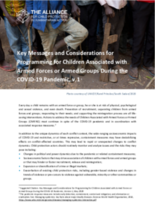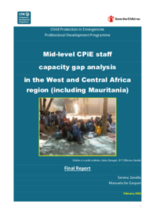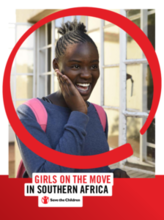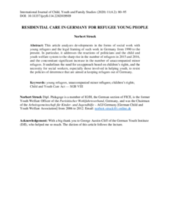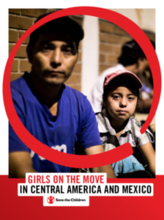Displaying 201 - 210 of 525
This document highlights issues relating to prevention and response programming for Children Associated with Armed Forces or Armed Groups (CAAFAG) in the context of the COVID-19 pandemic.
In this episode of the Protected! Podcast, Elsa Laurin, the Senior Child Protection Officer for the East and Horn of Africa from UNHCR, tells Hani Mansourian how they and their partner organisations re-prioritised child protection cases in response to the changing situation of shut borders in eastern Africa as the threat of an outbreak of COVID-19 loomed.
The purpose of this report is to provide analysis and policy implications to assist the African Union (AU), Regional Economic Communities (RECs), Member States and Development Partners in decision-making and in the implementation of peace and security related instruments.
This article uses the framework of the CRC to review how the world has studied the involvement of child soldiers in armed conflict.
This Country Care Review includes the care-related concluding observations adopted by the Committee on the Rights of the Child and the Committee on the Rights of Persons with Disabilities, as well as other care-related concluding observations, ratification dates, and links to the Universal Periodic Review and Hague Intercountry Adoption Country Profile.
The child protection in emergencies (CPiE) capacity gaps analysis (CGA) in the West and Central Africa (plus Mauritania) region, targeting CPiE practitioners with 3-5 years of professional experience, aimed to collect and provide information on (1) identified key CPiE capacity gaps and (2) existing and available capacity building initiatives.
This report’s primary purpose is to recommend evidence-based strategies to improve the relevance and effectiveness of field interventions that target development outcomes for migrant girls in Southern Africa.
This article analyzes developments in the forms of social work with young refugees and the legal framing of such work in Germany from 1990 to the present.
The primary purpose of this report is to recommend evidencebased strategies to improve the relevance and effectiveness of field interventions that target development outcomes for girls on the move in Central America and Mexico.
This brief - a supplement to the Stop the War on Children 2020: Gender matters report - highlights the situation of children in conflict zones in West and Central Africa with a focus on gender.

